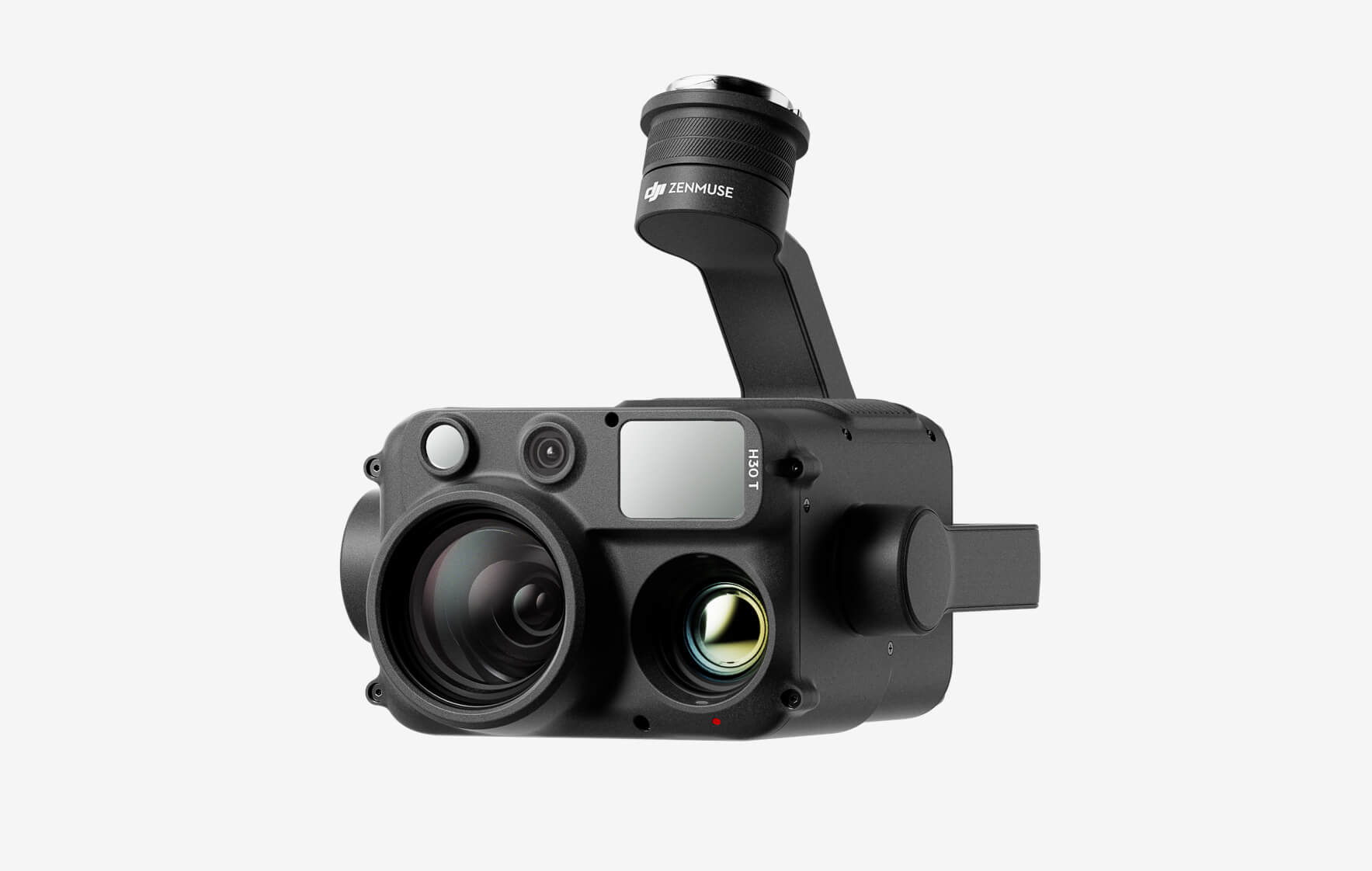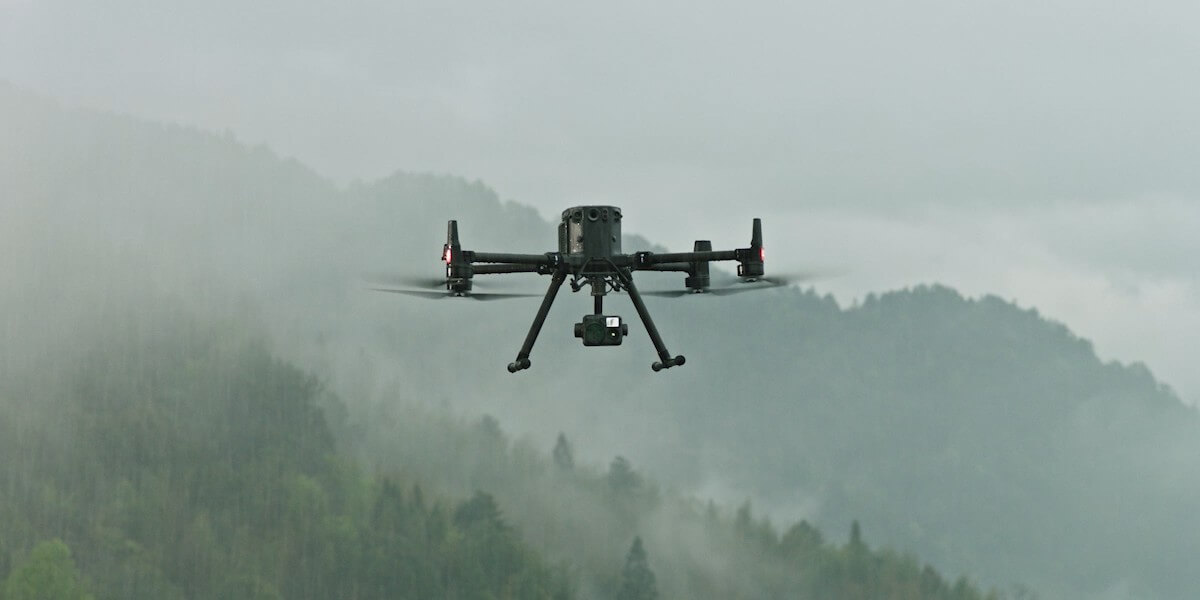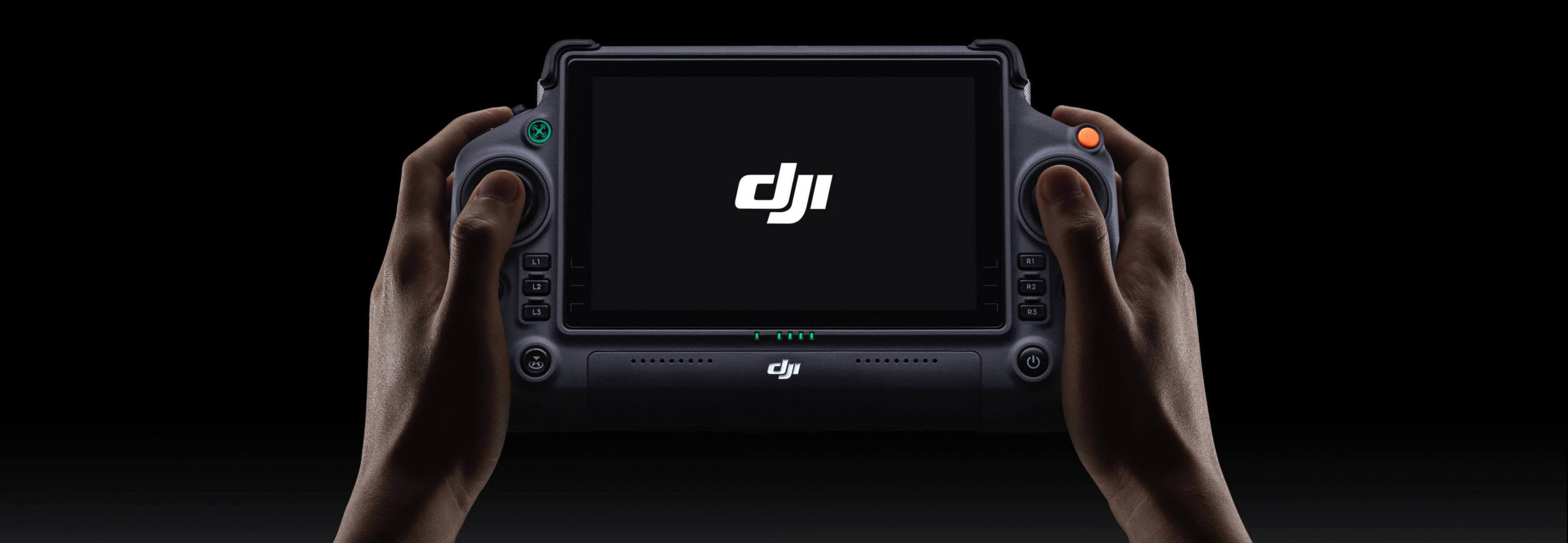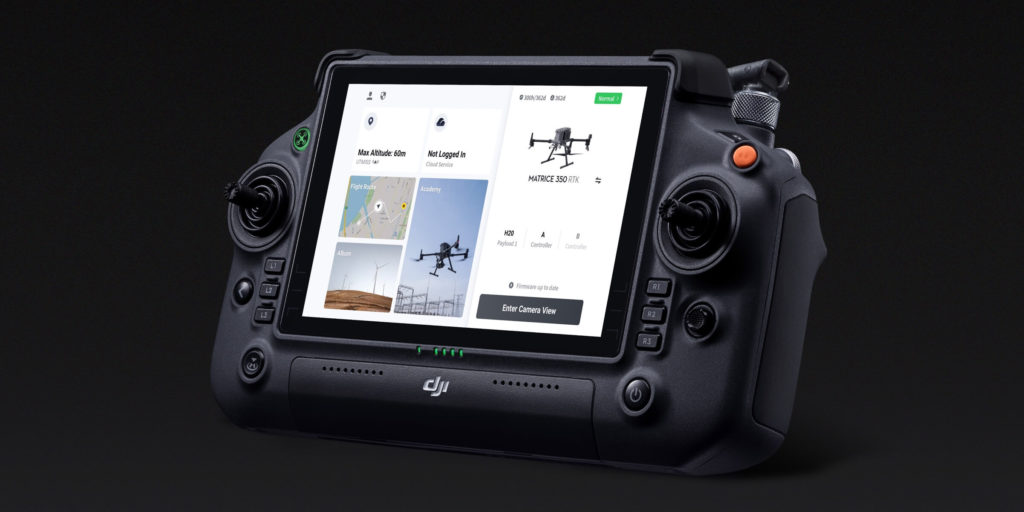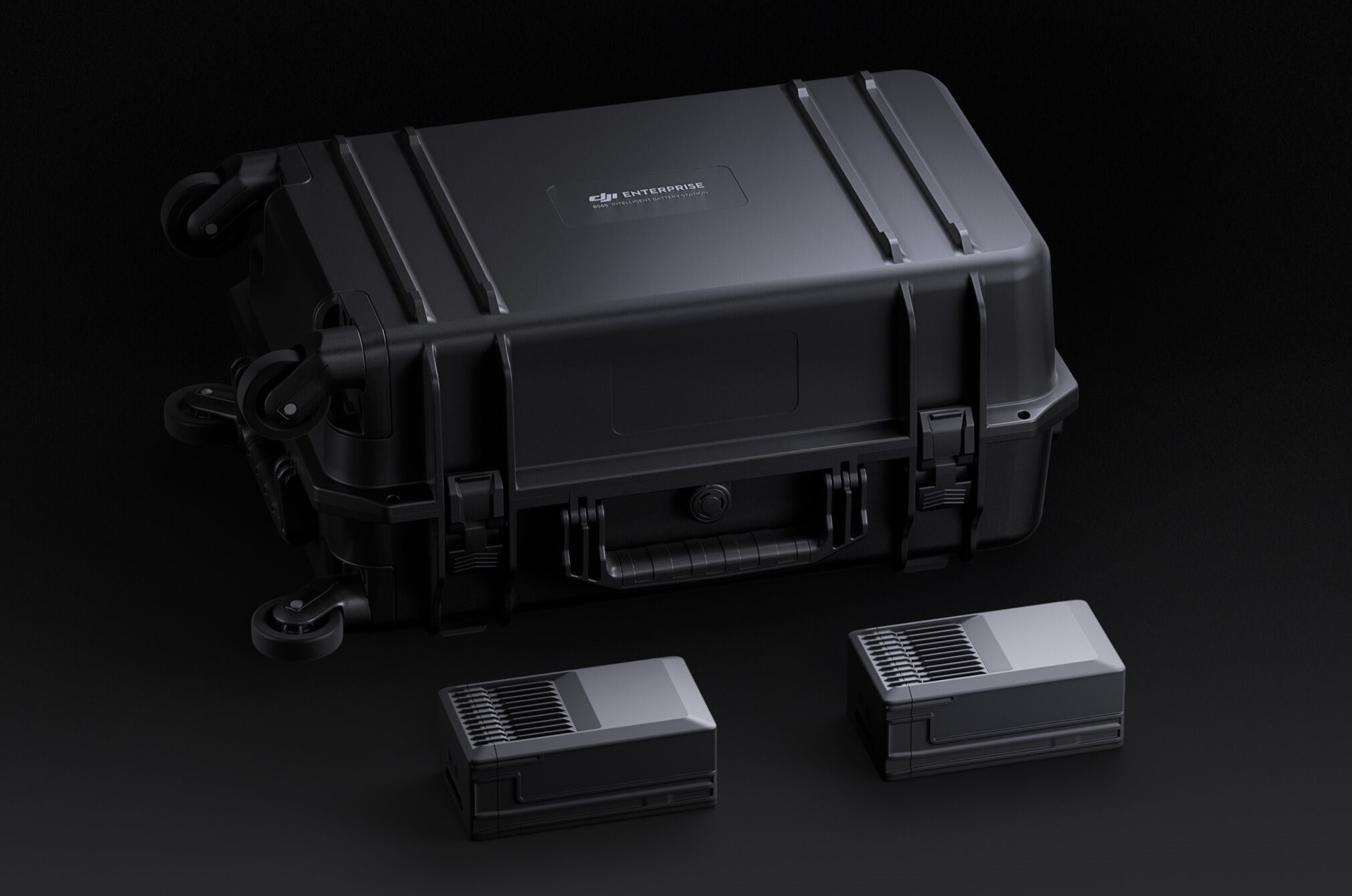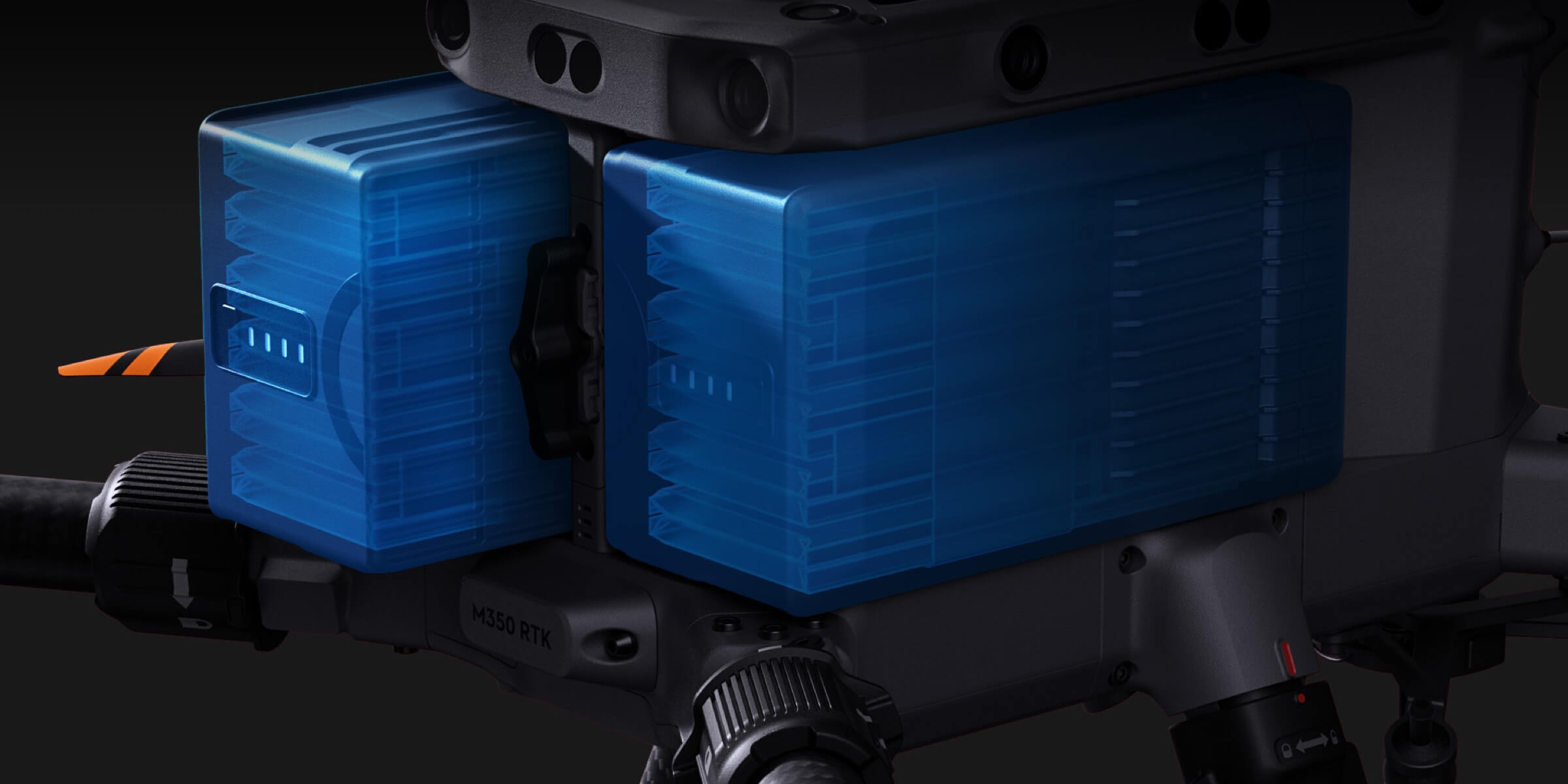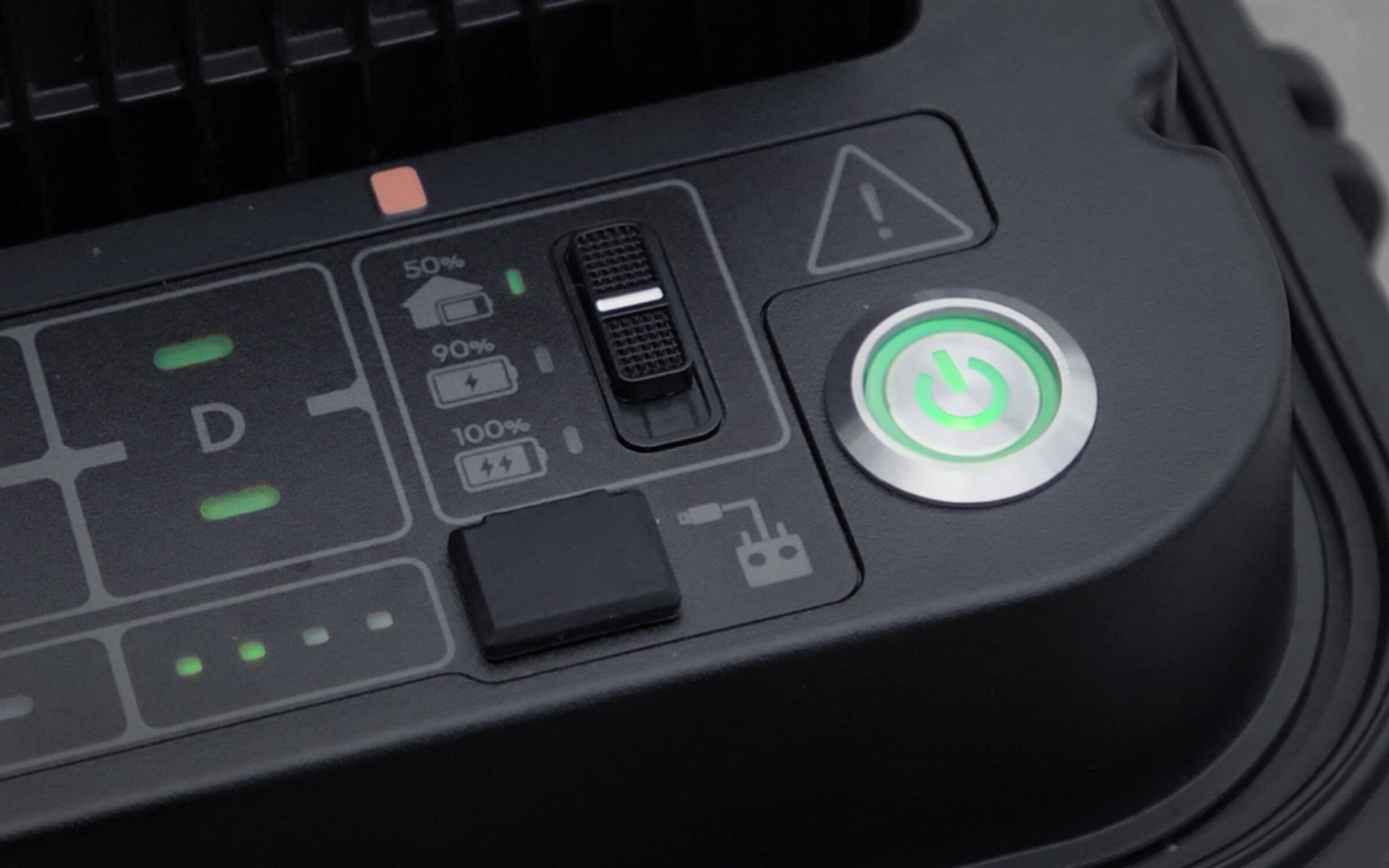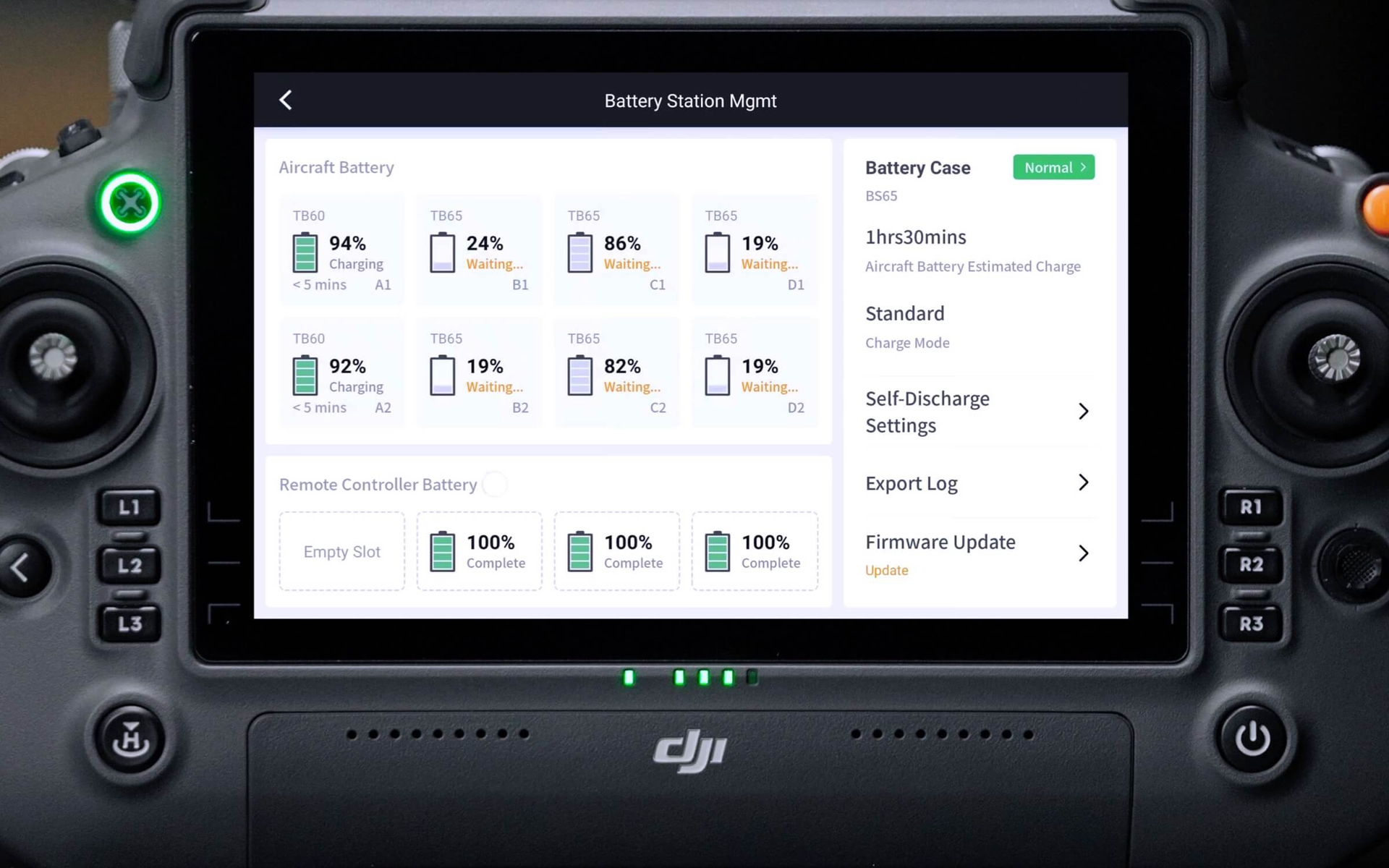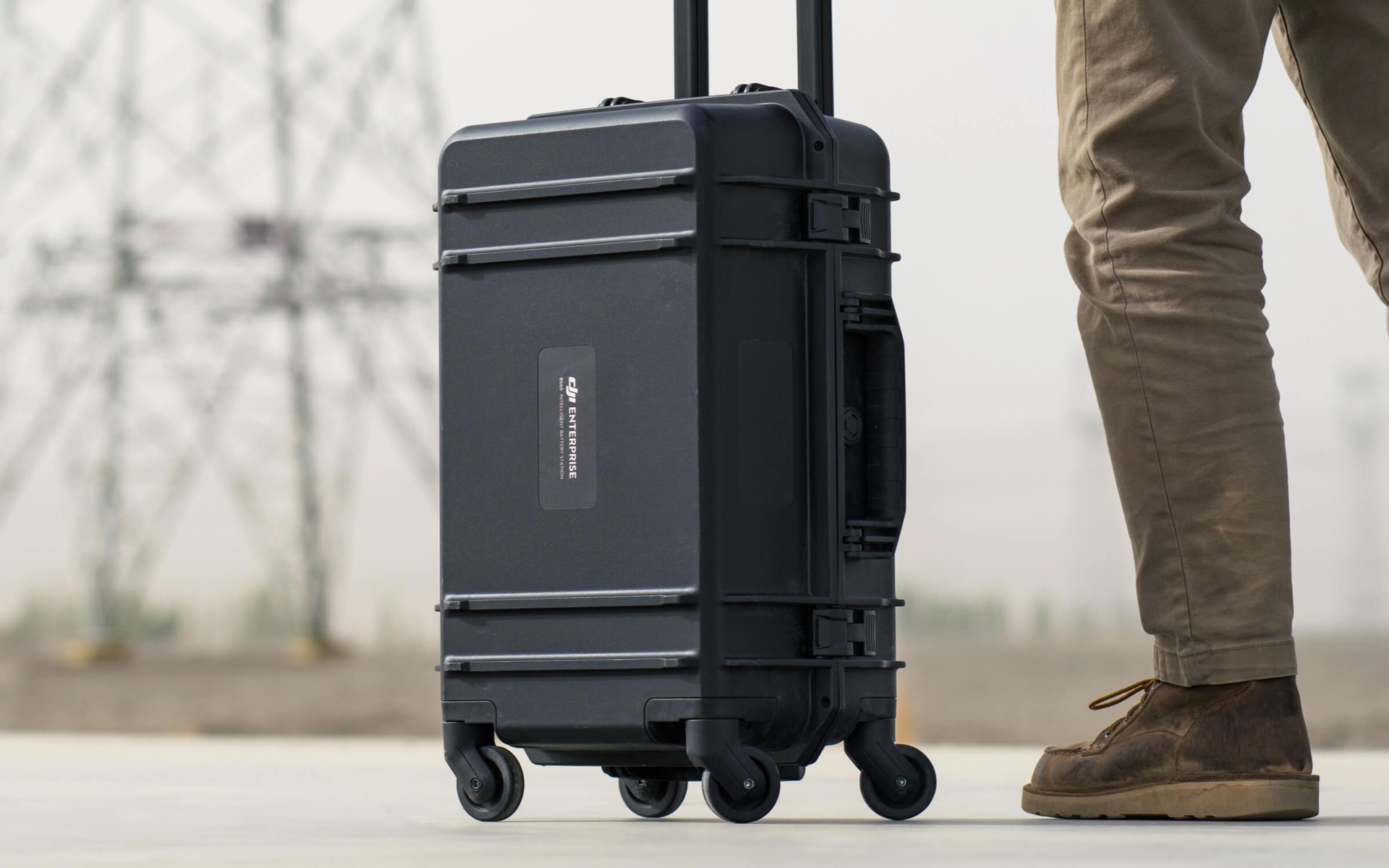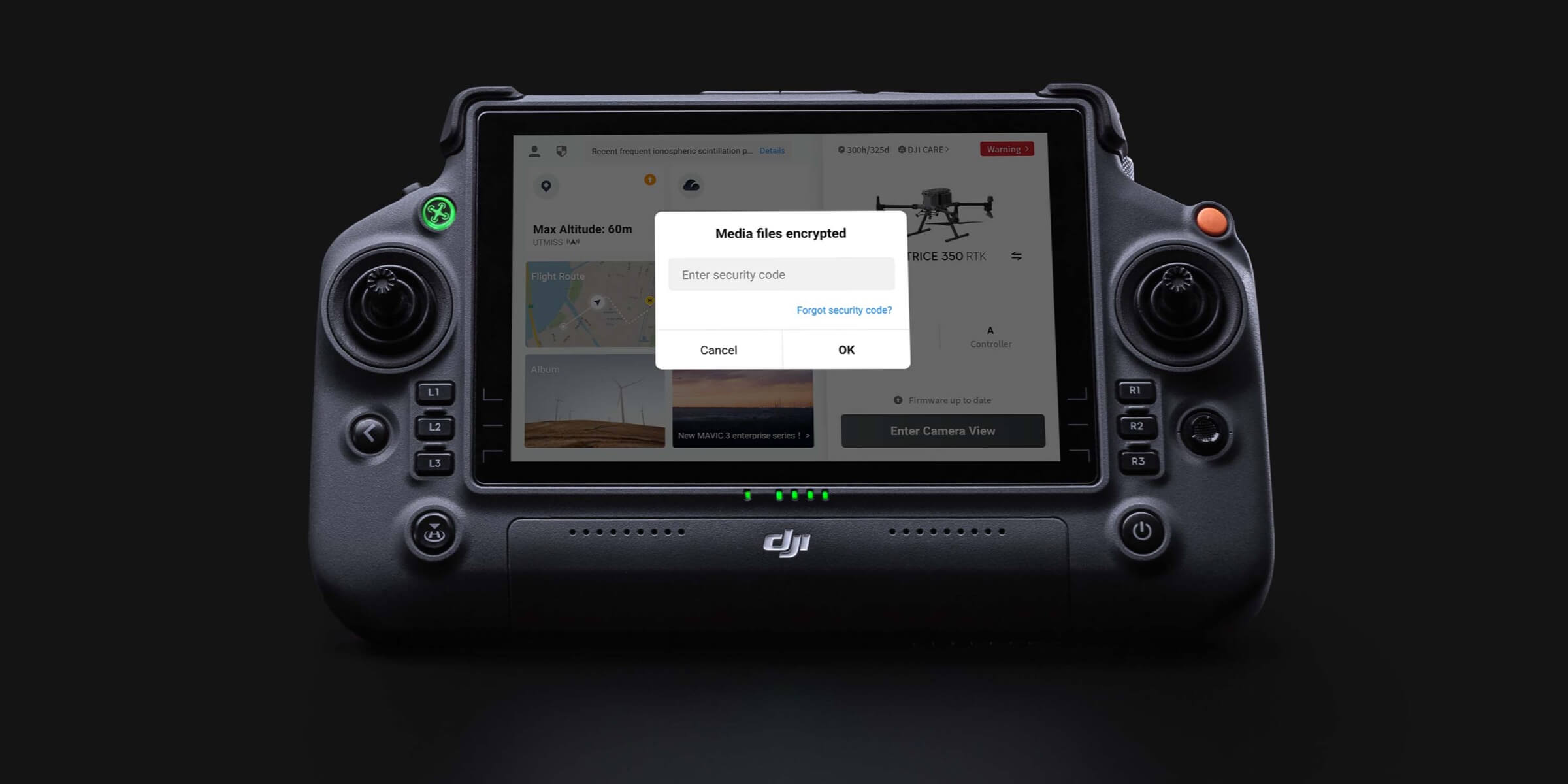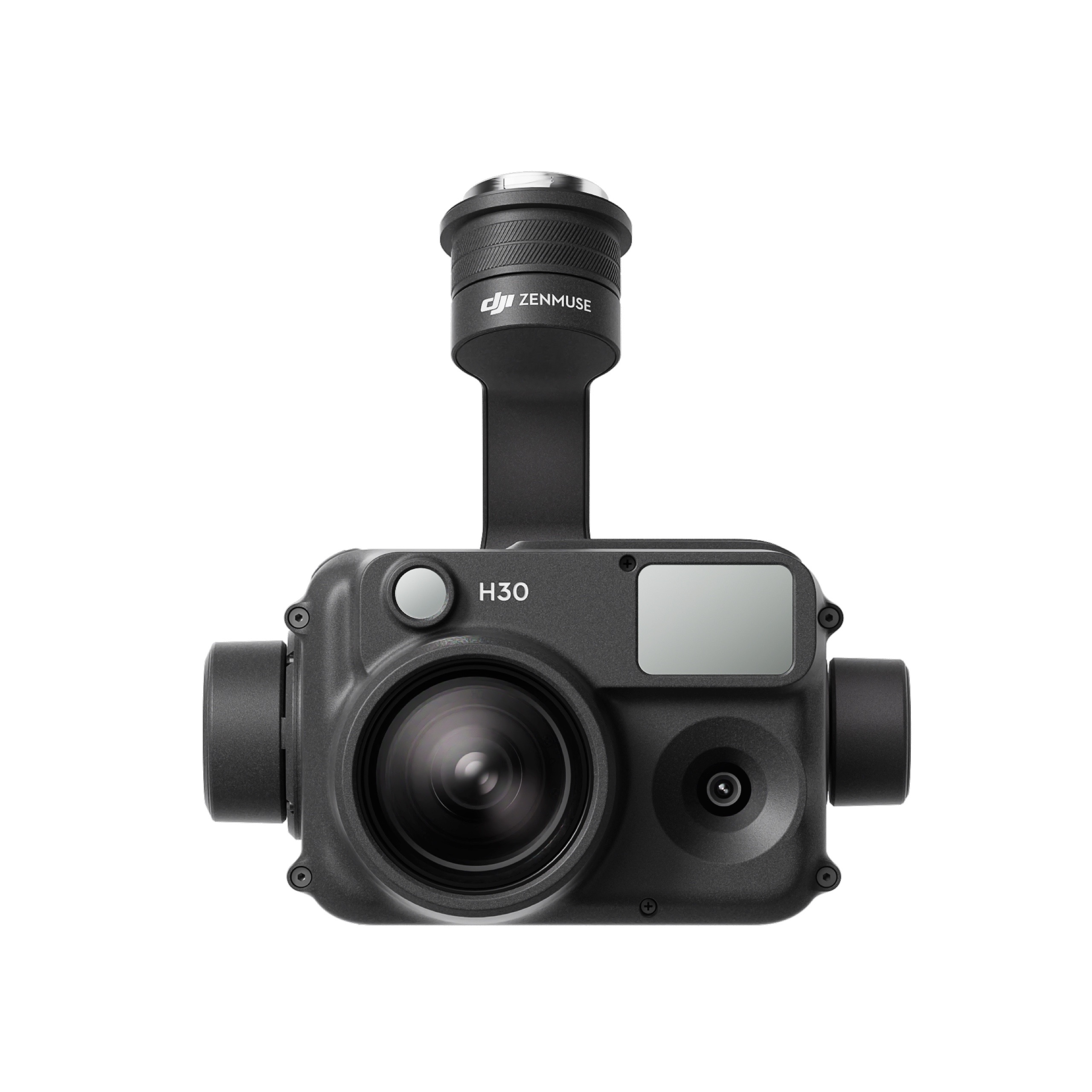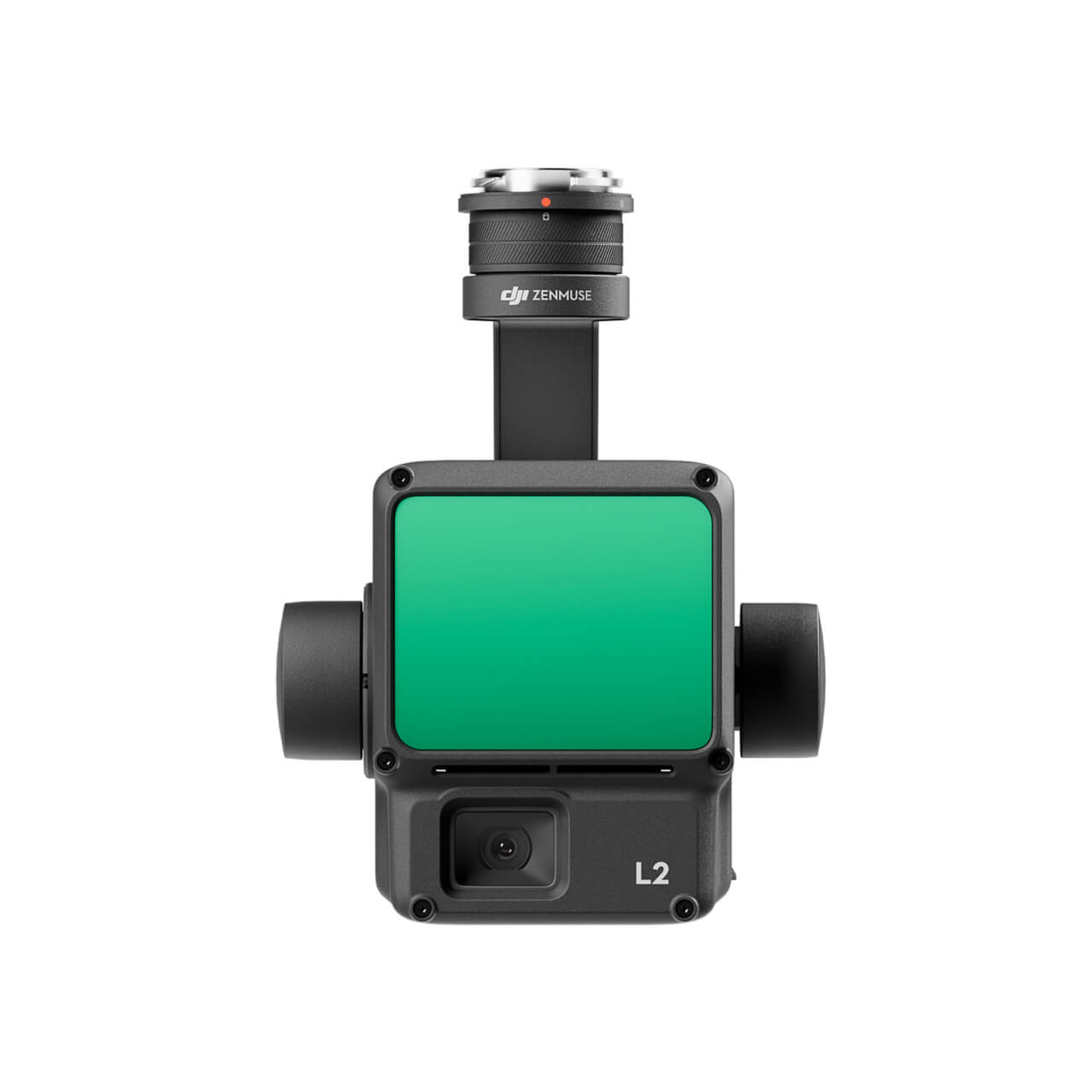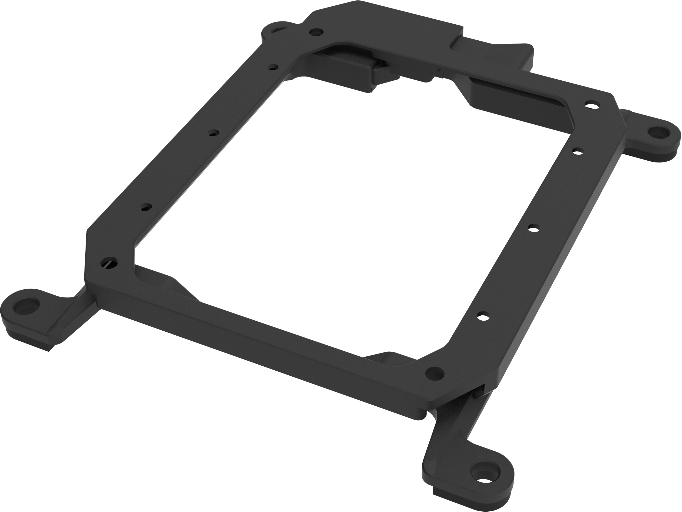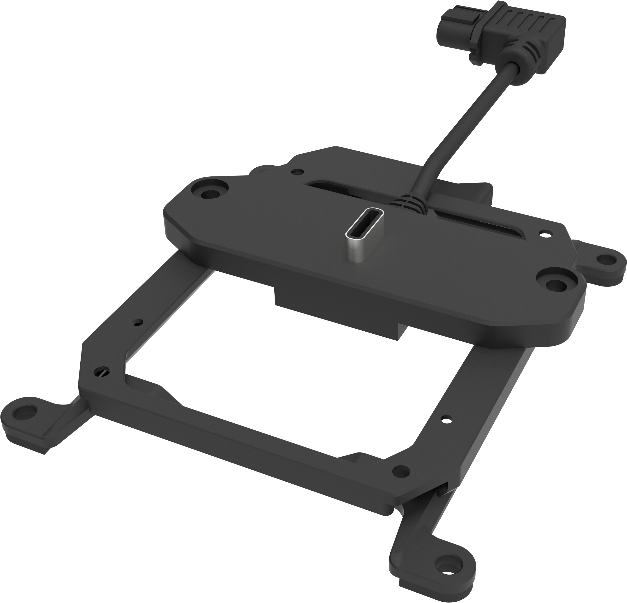Aircraft
| Dimensions (unfolded, without propellers) |
810×670×430 mm (L×W×H) |
| Dimensions (folded, with propellers) |
430×420×430 mm (L×W×H) |
| Diagonal Wheelbase |
895 mm |
| Weight (with single downward gimbal) |
Without batteries: Approx. 3.77 kg |
|
With two TB65 batteries: Approx. 6.47 kg |
| Single Gimbal Damper’s Max Payload |
960 g |
| Max Takeoff Weight |
9.2 kg |
| Operating Frequency |
2.4000-2.4835 GHz |
|
5.150-5.250 GHz (CE: 5.170-5.250 GHz) |
|
5.725-5.850 GHz |
| Transmitter Power (EIRP) |
2.4000-2.4835 GHz: |
|
< 33 dBm (FCC) |
|
< 20 dBm (CE/SRRC/MIC) |
|
5.150-5.250 GHz (CE: 5.170-5.250 GHz): |
|
< 23 dBm (CE) |
|
5.725-5.850 GHz: |
|
< 33 dBm (FCC/SRRC) |
|
< 14 dBm (CE) |
| Hovering Accuracy (with moderate or no wind) |
Vertical: |
|
±0.1 m (with vision positioning) |
|
±0.5 m (with GNSS positioning) |
|
±0.1 m (with RTK positioning) |
|
Horizontal: |
|
±0.3 m (with vision positioning) |
|
±1.5 m (with GNSS positioning) |
|
±0.1 m (with RTK positioning) |
| RTK Positioning Accuracy (RTK FIX) |
1 cm + 1 ppm (horizontal) |
|
1.5 cm + 1 ppm (vertical) |
| Max Angular Velocity |
Pitch: 300°/s |
|
Yaw: 100°/s |
| Max Pitch Angle |
30° |
|
When in N mode and with the forward vision system enabled: 25°. |
| Max Ascent Speed |
6 m/s |
| Max Descent Speed (vertical) |
5 m/s |
| Max Tilted Descent Speed |
7 m/s |
| Max Horizontal Speed |
23 m/s |
| Max Flight Altitude |
5000 m |
|
When using the 2110s propellers and with the takeoff weight ≤ 7.4 kg. |
|
7000 m |
|
When using the 2112 High-Altitude Low-Noise Propellers and with the takeoff weight ≤ 7.2 kg. |
| Max Wind Speed Resistance |
12 m/s |
| Max Flight Time |
55 minutes |
|
Measured with Matrice 350 RTK flying at approximately 8 m/s without payloads in a windless environment until |
| Supported DJI Gimbals |
Zenmuse H20, Zenmuse H20T, Zenmuse H20N, Zenmuse P1, and Zenmuse L1 |
| Supported Gimbal Configurations |
Single downward gimbal
Single upward gimbal
Dual downward gimbals
Single downward gimbal + single upward gimbal
Dual downward gimbals + single upward gimbal |
| Ingress Protection Rating |
IP55
The IP rating is not permanently effective and may decrease due to product wear and tear. |
| Global Navigation Satellite System |
GPS + GLONASS + BeiDou + Galileo |
| Operating Temperature |
-20° to 50° C (-4° to 122° F) |
Remote Controller
| Screen |
7.02-inch LCD touchscreen |
| Resolution |
1920×1200 |
| Max Brightness |
1200 nits |
| Weight |
Approx. 1.25 kg (without WB37 battery) |
|
Approx. 1.42 kg (with WB37 battery) |
| Global Navigation Satellite System |
GPS + Galileo + BeiDou |
| Built-in Battery |
Type: Li-ion (6500 mAh@7.2 V) |
|
Charging Type: Battery station or USB-C charger |
|
Charging Time: 2 hours |
|
Chemical System: LiNiCoAlO2 |
| External Battery (WB37 Intelligent Battery) |
Capacity: 4920 mAh |
|
Voltage: 7.6 V |
|
Type: Li-ion |
|
Energy: 37.39 Wh |
|
Chemical System: LiCoO2 |
| Ingress Protection Rating |
IP54 |
| Operating Time |
Built-in Battery: approx. 3.3 hours |
|
Built-in Battery + External Battery: approx. 6 hours |
| Operating Temperature |
-20° to 50° C (-4° to 122° F) |
| Operating Frequency |
2.4000-2.4835 GHz |
|
5.725-5.850 GHz |
| Transmitter Power (EIRP) |
2.4000-2.4835 GHz: |
|
< 33 dBm (FCC) |
|
< 20 dBm (CE/SRRC/MIC) |
|
|
|
5.725-5.850 GHz: |
|
< 33 dBm (FCC) |
|
< 14 dBm (CE) |
|
< 23 dBm (SRRC) |
| Wi-Fi Protocol |
Wi-Fi 6 |
| Wi-Fi Operating Frequency |
2.4000-2.4835 GHz |
|
5.150-5.250 GHz |
|
5.725-5.850 GHz |
| Bluetooth Protocol |
Bluetooth 5.1 |
| Bluetooth Operating Frequency |
2.4000-2.4835 GHz |
Video Transmission
| Video Transmission System |
DJI O3 Enterprise Transmission |
| Antenna |
4 video transmission antennas, 2T4R |
| Max Transmission Distance (unobstructed, free of interference) |
20 km (FCC) |
|
8 km (CE/SRRC/MIC) |
| Max Transmission Distance (with interference) |
Low Interference and Obstructed by Buildings: approx. 0-0.5 km |
|
Low Interference and Obstructed by Trees: approx. 0.5-3 km |
|
Strong Interference and Unobstructed: urban landscape, approx. 1.5-3 km |
|
Medium Interference and Unobstructed: suburban landscape, approx. 3-9 km |
|
Low Interference and Unobstructed: suburb/seaside, approx. 9-20 km |
|
Measured Transmission Distance.
FCC Compliance in unobstructed environments with typical interference at a flight altitude of approximately 120 m. Data is for reference only. The actual transmission distance may vary depending on the environment’s obstruction and interference conditions. Please pay attention to reminders in the app. |
Vision System
| Obstacle Sensing Range |
Forward/Backward/Left/Right: 0.7-40 m
Upward/Downward: 0.6-30 m |
| FOV |
Forward/Backward/Downward: 65° (horizontal), 50° (vertical)
Left/Right/Upward: 75° (horizontal), 60° (vertical) |
| Operating Environment |
Surfaces with discernible patterns and adequate lighting (lux > 15) |
Infrared Sensing System
| Obstacle Sensing Range |
0.1-8 m |
| FOV |
30° (±15°) |
| Operating Environment |
Large, diffuse, and reflective obstacles (reflectivity > 10%) |
LED Auxiliary Light
| Effective Illumination Distance |
5 m |
| Illumination Type |
60 Hz, solid glow |
FPV Camera
| Resolution |
1080p |
| FOV |
142° |
| Frame Rate |
30fps |
Intelligent Flight Battery
| Model |
TB65 |
| Capacity |
5880 mAh |
| Voltage |
44.76 V |
| Type |
Li-ion |
| Energy |
263.2 Wh |
| Weight |
Approx. 1.35 kg |
| Operating Temperature |
-20° to 50° C (-4° to 122° F) |
| Ideal Storage Temperature |
22° to 30° C (71.6° to 86° F) |
| Charging Temperature |
-20° to 40° C (-4° to 104° F) |
| Charging Time (220V power supply) |
Approx. 60 minutes to fully charge two TB65 batteries; Approx. 30 minutes to charge from 20% to 90% |
| Charging Time (110V power supply) |
Approx. 70 minutes to fully charge two TB65 batteries; Approx. 40 minutes to charge from 20% to 90% |
Please note that charging at low temperatures may reduce battery life, and it is recommended to charge within the recommended temperature range for optimal performance.
Intelligent Battery Station
| Dimensions |
580×358×254 mm (L×W×H) |
| Net Weight |
Approx. 8.98 kg |
| Compatible Stored Items |
Eight TB65 Intelligent Flight Batteries
Four WB37 Intelligent Batteries |
| Input Voltage |
100-120 VAC, 50-60 Hz
220-240 VAC, 50-60 Hz |
| Max Input Power |
1070 W |
| Output Power |
100-120 V: 750 W
220-240 V: 992 W |
| Operating Temperature |
-20° to 40° C (-4° to 104° F) |
Aircraft
What is the ingress protection (IP) rating of M350 RTK? Can I fly the drone in the rain?
M350 RTK is IP55 rated.
The IP rating is not permanently effective and may decrease due to wear and tear. Do not fly in rain heavier than 100 mm/24 hr.
Which propellers come with M350 RTK?
M350 RTK comes with the standard 2110s Propellers. You can also use the optional 2112 High-Altitude Low-Noise Propellers.
Can I use the propellers of M300 RTK on M350 RTK?
Yes, but only one type of propeller can be used simultaneously. Do not mix two types of propellers during use.
Can I replace the propellers of M350 RTK by myself?
Yes. When replacing the propellers, please also replace the corresponding screws and attach a proper amount of threadlocker (threadlocker 243 is recommended) to the surface of the new screws.
Battery
How long does it take to fully charge two TB65 Intelligent Flight Batteries?
With a 220V power supply, it takes approximately 60 minutes to fully charge two TB65 Intelligent Flight Batteries and approximately 30 minutes to charge them from 20% to 90%.
With a 110V power supply, it takes approximately 70 minutes to fully charge two TB65 Intelligent Flight Batteries and approximately 40 minutes to charge them from 20% to 90%.
Does M350 RTK support the TB60 Intelligent Flight Battery?
Yes, but only two TB60 batteries can be used simultaneously. Do not mix TB60 and TB65 batteries during use.
Why does the battery heat up during long-term storage?
During long-term storage, the battery will automatically discharge to approximately 50% to ensure storage safety and extend battery life. It is normal for the battery to feel slightly warm during this process.
Can I use the TB65 Intelligent Flight Battery in low-temperature environments?
Yes. The operating temperature of the TB65 Intelligent Flight Battery is -20° to 50° C (-4° to 122° F). When the battery is used in low-temperature environments, the battery life will be reduced. Please schedule the flight time properly. To ensure optimal performance, it is recommended to keep the battery temperature above 15° C (59° F) before flying.
For charging in environments of -20° to 5° C (-4° to 41° F), the battery will automatically heat up before starting the charging process. Once installed on the aircraft and powered on, the battery, if at a low temperature, will automatically heat up to maintain a temperature of approximately 16° to 20° C (60.8° to 68° F).
What is the service life of the TB65 Intelligent Flight Battery?
There are three ways to calculate the service life, including 12 months, 400 cycles, and 120 days of high-power storage. The final service life depends which comes first.
Can I carry the TB65 Intelligent Flight Battery onto an airplane?
The energy of the TB65 Intelligent Flight Battery is 263 Wh, so it cannot be carried onto an airplane according to airline regulations.
How do the fans of the BS65 Intelligent Battery Station work?
The fans automatically turn on or off and adjust rotation speed according to the ambient temperature and battery temperature.
How many batteries can be charged by the BS65 Intelligent Battery Station simultaneously?
The BS65 Intelligent Battery Station can store eight TB65 Intelligent Flight Batteries and four WB37 Intelligent Batteries at the same time. It can charge two TB65 batteries and one WB37 battery simultaneously. Batteries with the highest battery level will be charged first, followed by others with lower levels.
Remote Controller
How do I charge DJI RC Plus?
The charger for the remote controller is integrated in the BS65 Intelligent Battery Station. You can charge the remote controller by connecting it to the battery station with the USB-C cable.
Is M350 RTK compatible with the remote controller of M300 RTK?
No.
Can I use DJI RC Plus with M300 RTK or the M30 Series?
Yes. Please update the firmware of DJI RC Plus to v01.02.04.40 or higher, select the corresponding drone model in DJI Pilot 2, and then complete the linking.
Payloads
Which payloads are compatible with M350 RTK?
Zenmuse H20N, Zenmuse L1, Zenmuse P1, Zenmuse H20/H20T, and third-party payloads developed based on the Payload SDK.
How many payloads can be mounted on M350 RTK simultaneously?
M350 RTK supports mounting up to three payloads simultaneously, with the single upward gimbal and dual downward gimbals used together.
RTK
Can I use M350 RTK for precision surveying?
M350 RTK can perform precision surveying when equipped with Zenmuse P1, Zenmuse L1, or a third-party payload developed based on the Payload SDK. For details, please leave your contact information at the bottom of the page, and we will contact you as soon as possible.
Does M350 RTK support the post-processed kinematic (PPK) technology?
When M350 RTK is mounted with Zenmuse P1 or Zenmuse L1, the task folder stores photos/point clouds, GNSS observations, and image log files, which are used for PPK post-processing calculations.
How does M350 RTK obtain real-time differential data?
M350 RTK supports obtaining real-time differential data in the following ways:
- Connect the aircraft to the D-RTK 2 Mobile Station (supporting RTCM3.2 protocol) via DJI Pilot 2.
- Connect the remote controller to the custom Network RTK service based on NTRIP protocol (supporting RTCM3.0/RTCM3.1/RTCM3.2 protocols) via a Wi-Fi hotspot.
Can one D-RTK 2 Mobile Station support multiple M350 RTK simultaneously?
Yes, there is no limit to the number of drones that can be used simultaneously.
Firmware
How do I update the firmware?
You can update firmware in the following ways:
- Connect the aircraft to a computer and use DJI Assistant 2 (Enterprise Series) to update the firmware of the aircraft, remote controller, and D-RTK 2 Mobile Station.
- Use DJI Pilot 2 to update the firmware of the aircraft, remote controller, and Intelligent Battery Station.
- Visit the official DJI website to download the offline firmware update package for the aircraft, Intelligent Battery Station, and remote controller. Then, insert an SD card storing the firmware package into the remote controller for offline update.
For details, please refer to the user manual.
SDK
What changes have been made to the E-Port compared to the Onboard SDK port?
E-Port is a new-generation expansion port of DJI Enterprise drones. E-Port has the same pin definition as the Onboard SDK port, but the USB link requires that the third-party payload be used as a secondary device (opposite to the Onboard SDK port). In terms of software, E-Port only supports Payload SDK V3 or later versions, and is not compatible with Onboard SDK. For technical support.
Which kinds of SDK development does M350 RTK support?
M350 RTK supports Payload SDK, Mobile SDK, and Cloud API. For technical support.
Can I use third-party Payload SDK payloads compatible with the M200 Series and M300 RTK directly on M350 RTK?
Third-party payloads developed based on the Skyport V2 or X-Port can be compatible with M350 RTK after updating the adapter and third-party firmware. For other questions, please contact the corresponding payload provider or DJI Support.
Other
Which accessories are compatible with both M300 RTK and M350 RTK?
For details, please refer to the Accessory Compatibility List on the Downloads page.
What are the versions and areas of use of M350 RTK?
M350 RTK has two versions, including a Chinese version and a general version. The former can be used in China only, and the latter can be used in non-China regions. Please consult your local after-sales center or dealer about product availability.
